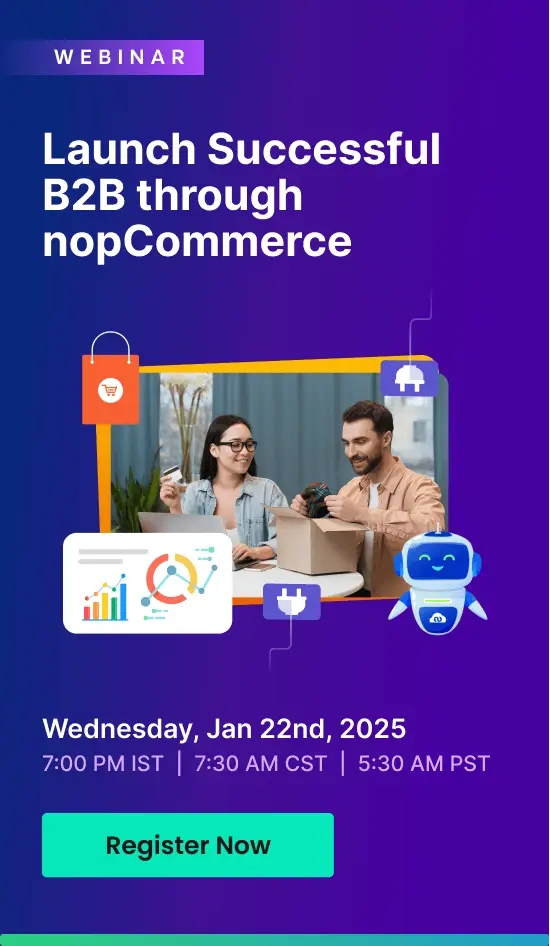As a CEO, business growth is likely near the top of your priority list. In fact, 62% of CEOs selected growth as their top business priority in 2024, the highest level since 2014.
But growth stalls when your team is stuck doing grunt work. When systems work in isolation, teams waste hours on manual data entry, copying information between platforms, and reconciling discrepancies. It leaves them with less time and energy for the strategic work that actually drives growth.
Lack of integration within different systems slows down your operations. Inventory may not sync, CRM data stays separate from support, and order fulfillment takes more time. These gaps create delays, inconsistent customer experiences, and missed growth opportunities.
You don’t have to accept these limitations. Integration platforms like APPSeCONNECT connect your e-commerce, ERP, CRM, and business applications automatically. This frees your team to focus on growth.
This article shows you how integration drives growth and helps you execute on your goals.
The CEO's Growth Agenda
You can drive growth through integration. But you need to solve three critical challenges that disconnected systems create to achieve that growth.
The Customer Expectation Revolution: Why Disconnected Systems Cost You Customers
Your customers don’t care about your internal systems. They don’t want excuses about syncing issues.
Customers expect Amazon-level service from every business they interact with. They want real-time order tracking, instant support with full context of their history, and personalized recommendations based on their behavior.
When your systems don’t communicate, delivering on these expectations becomes nearly impossible. Think about what this means:
- A customer calls support after placing an online order. Your agent can’t see what they bought.
- Another browses your website, adds items to the cart, and later receives irrelevant product emails because your team didn’t update marketing data.
Every disconnected interaction signals to customers that your business lacks alignment. And that hurts trust and retention. A study of more than 2000 customers shows that 86% of customers would leave a brand after as few as two poor experiences. You can’t afford to waste those chances on integration problems.
The Data Deluge: Turning Information Overload Into Actionable Insights
Your business collects more data than ever before. Customer behavior data, sales data, operational data, financial data, and marketing data pour in from websites, mobile apps, email campaigns, social media, retail stores, customer service interactions, and dozens of other sources. But most of that data is useless when it lives in isolation.
- Marketing can’t see which campaigns lead to profitable customers
- Operations can’t predict inventory needs without real-time sales data
- Executives make decisions from week-old reports that someone manually compiled
With isolated systems, you end up with what experts call “dirty data.” Your teams get duplicate, contradictory, and outdated information. They make decisions based on different versions of truth. This carries a heavy opportunity cost.
The average organization uses 1000 different applications, according to Salesforce. Without integration, this creates over 1000 potential islands of information that never flow to where your team needs them the most.
According to Mickensey, data-driven companies are 23× more likely to acquire customers and 6× more likely to retain them. Integrated systems accelerate decision speed and predictive accuracy, empowering your business to move from reactive analysis to proactive intelligence.
The Need for Speed and Agility: How Integration Enables Rapid Market Response
The market moves fast. Competitors launch new features. Supply chains get disrupted. Viral trends create demand. But speed is impossible with disconnected systems.
- Launching new products means manually updating inventory in three systems
- Responding to supply issues means days of emails and spreadsheets
- Capitalizing on trends means teams scrambling across platforms
CEOs are entertaining a growth mindset and identifying operations efficiency as a key theme, with 34% naming AI as the top transformation priority.
But AI is only as powerful as the data that fuels it. Without system integration, AI tools are left processing incomplete, inconsistent, or siloed data—essentially, garbage in, garbage out. Integration lays the foundation for agility, empowering AI and analytics to deliver real insights, faster responses, and smarter decisions across the organization.
In short, integration isn’t just an IT goal—it’s a speed and competitiveness strategy.
Four Core Growth Plays Fueled by Integration
Engineering a Superior Customer Experience
Imagine a customer visits your online store, adds a few products to their cart, but leaves before checking out. A few hours later, they received an automated reminder with a small discount. The next day, when they open your mobile app, they see personalized recommendations based on their browsing history. Once they complete the purchase:
- Your inventory updates
- Customer receives loyalty points
- Email system queues a thank-you
- The CRM records their behavior for future campaigns
This is where you can provide a superior customer experience through integration. Now imagine the same scenario without integration:
- Your systems fragment customer activity
- CRM lacks updated data
- Inventory updates lag behind
- Customers experience a disjointed journey and you lose opportunities to engage
Integration creates a single source of truth that every system can access in real time.
APPSeCONNECT helps your business create these seamless experiences. It connects e-commerce platforms, CRM systems, ERP solutions, and customer service tools into one unified ecosystem.
When systems communicate automatically, customers never repeat themselves. Teams always have context. Every interaction builds on the last.
Achieving Operational Excellence
Running SAP with multiple eCommerce channels creates daily chaos. Your team manually juggles inventory across Shopify, Amazon, and B2B portals.
With 50 daily orders, that’s 12.5 hours of data entry. Price updates don’t sync across channels. Support teams can’t see the complete customer history across platforms.
Consider someone spending two hours daily syncing data:
- That’s 10 hours weekly, 520 hours yearly
- At $30 per hour loaded cost, that’s $15,600 annually
- For one person doing one task
- Most mid-sized companies burn hundreds of thousands on work integration could eliminate
Manual processes introduce errors. Mistyped numbers. Forgotten steps. Skipped fields. These mistakes ripple through your business. This is why you need an iPaaS for operational excellence, as it automates data flow between systems. When an order comes in, it automatically:
- Creates invoices in accounting
- Updates inventory in ERP
- Triggers fulfillment in warehouse systems
- Notifies customer service
No human touches it. As a result, you have fewer/no errors, and your team focuses on value creation instead of copy-paste work.
MacuHealth, a leading eye-care supplement provider, is a perfect example. By integrating WooCommerce and SAP Business One through APPSeCONNECT, the company automated all key workflows and eliminated manual data handling.
As a result, they processed over 100 orders per day efficiently, reduced customer complaints, and achieved a 30% increase in sales volume, all without adding any overhead costs.
Accelerating Mergers & Acquisitions (M&A) Value
58% of U.S. CEOs expect an increase in megadeal activity (transactions valued at $10 billion or more). If you’re among them, integration will become your biggest challenge or advantage.
Here’s the reality. You buy a company to gain customers, technology, or market presence. Then you spend 18 months trying to combine the businesses:
- Systems don’t talk to each other
- Customer data lives in incompatible formats
- You can’t offer acquired customers your full product line
- You’re running two separate companies under one name
This eliminates most of the value you paid for.
Companies that win at M&A connect systems in weeks, not years. They give acquired customers immediate access to expanded products and combine customer data for better insights. They eliminate duplicate systems without disrupting operations.
Integration platforms become invaluable here. Instead of months of custom-coding connections, you use pre-built connectors that get systems talking in days. APPSeCONNECT specializes in this challenge. It helps companies quickly integrate acquired businesses without massive IT projects.
The speed advantage is massive. If competitors need 18 months to integrate and you do it in three, you capture value 15 months sooner.
Launching New, Data-Driven Business Models
The most exciting growth opportunities require combining data and capabilities in new ways. You want to launch subscriptions. But it needs to connect your e-commerce platform, billing system, and customer service tools.
You want personalized recommendations. But it requires combining purchase history, browsing data, and preference data. Every new business model is an integration challenge.
- Test new ideas in weeks instead of months
- Launch revenue streams without multi-year IT projects
- Adapt to market changes while competitors write requirements
- Combine data sources in creative ways
Think about the subscription economy. Dollar Shave Club and HelloFresh didn’t just have good products. They had integrated systems handling recurring billing, dynamic inventory, personalized experiences, and proactive service. That integration capability was the business model. The same applies across industries:
- Manufacturers add service subscriptions on top of products
- Retailers launch marketplaces
- B2B companies create portals with real-time tracking
Every innovation requires integrating systems never designed to work together. Companies with integration capabilities innovate. Those without are stuck watching agile competitors steal their future.
Building an Integration-First Culture
Culture determines whether integration succeeds or fails. You need organizational change, not just technology.
Start at the Executive Level
Technology alone won’t save you. Building an integration-first culture means changing how your organization thinks about systems and data.
Start with the executive team. Every major business decision should include integration questions: “How will this work with existing systems?“
- When you evaluate a new CRM, ask how it integrates with your ERP, e-commerce, and marketing tools
- When you plan product launches, map every system that needs to communicate
- Make sure connections exist before you go live
Select a Flexible integration Platform Like APPSeCONNECT
Technology alone won’t save you, but the right platform makes cultural change possible. You need an integration solution that grows with your organization.
Look for platforms that offer:
- Pre-built connectors for your existing tech stack (eliminating custom development delays)
- Templates and frameworks that ensure consistency across your integration ecosystem
- Low-code capabilities that empower business users, not just IT teams
- Scalable architecture that handles increasing data volumes and complexity
APPSeCONNECT provides these capabilities out of the box. Rather than building custom integrations for every new tool, you can use proven connectors that work reliably. This approach reduces implementation time from months to days and ensures your integrations remain maintainable over time.
Set Up Automation for Data Flow Across Systems
Once you’ve defined your core systems and selected your platform, focus on automating the data flows that currently require manual intervention.
Prioritize automation based on business impact:
- Start with processes that touch multiple departments (order-to-cash, lead-to-revenue)
- Eliminate manual data entry that creates errors and delays
- Automate synchronization for critical data (inventory levels, customer information, financial records)
- Build real-time connections where timing matters (pricing updates, stock availability)
APPSeCONNECT‘s low-code approach enables business users to participate in building and maintaining integrations, not just consuming them.
Measure What Matters
Track integration health with meaningful metrics:
- How connected are your systems?
- How much manual data entry are teams doing?
- How long does it take to launch new connections?
- How do integration improvements impact business outcomes?
Tie integration metrics to business results. Show how reducing manual processes increased profitability. Demonstrate how faster connections enabled quicker market response. Make integration a business priority, not just IT.
Technology Choices That Matter
When you invest in integration, the choice framework is straightforward if you focus on growth.
Move Beyond Custom Development
Custom development was the old integration approach. Every time systems needed to talk, you hired developers to write custom code. This worked with three systems. It becomes a nightmare with thirty:
- Every integration is unique
- Nobody understands how it works except the original developer
- When systems update, integrations break mysteriously
- Maintenance costs spiral
- Adding new systems means starting from scratch
The Modern Integration Platform Approach
Modern platforms use pre-built connectors and templates. The platform handles authentication, data transformation, error handling, and monitoring. You configure rather than code. When you need changes, you adjust workflows instead of rewriting integrations.
Here’s what to look for in integration platforms:
- Pre-built connectors for core systems: The platform should already talk to your e-commerce platform, ERP, CRM, and essential tools. This eliminates months of development.
- No-code or low-code configuration: Business teams should modify workflows without IT tickets. This doesn’t mean IT loses control. They focus on complex challenges instead of simple changes.
- Scalability and reliability: As your business grows, integrations need to handle more data, transactions, and complexity. The platform should scale automatically without re-architecture.
- Monitoring and error handling: Things will go wrong. Systems will go down. Data will become unexpected. Your platform needs to detect issues, alert people, and provide tools to fix problems fast.
- Future flexibility You’ll add systems, change processes, and enter new markets. Your platform should make changes easy, not force you to rip everything out and start over.
APPSeCONNECT checks all these boxes. It provides pre-built connectors for major platforms. A visual, low-code interface helps business users configure integrations without deep technical knowledge. It’s built for growing companies needing integration to scale with them.
“We looked for different options but APPSeCONNECT was the only connector that covered all our business needs.” – JM Villegas
Read the complete JM Villegas case study here.
APPSeCONNECT: Your #1 choice for Business Integration
95% of enterprises leveraging APPSeCONNECT achieve full ROI within just six months.
APPSeCONNECT deeply understands business requirements, providing a seamless integration between ecommerce and ERP. It enables bidirectional data exchange across systems, eliminating manual data entry and ensuring complete synchronization.
With its distinctive iPaaS approach and advanced capabilities, APPSeCONNECT stands out from competitors like Workato, Jitterbit, Celigo, and SnapLogic.
Here’s a look at a detailed comparison between the top iPaaS vendors:
| Feature Category | APPSeCONNECT | Workato | Jitterbit | Celigo | SnapLogic |
|---|---|---|---|---|---|
| Pricing & TCO (Total Cost of Ownership) | ★★★★★ Lowest TCO with flexible pricing |
★★★★☆ High-cost enterprise pricing |
★★★☆☆ Mid-range with add-on costs |
★★★☆☆ Tiered pricing, can become costly |
★★☆☆☆ Premium pricing, high volume costs |
| Implementation Time | ★★★★★ Rapid Deployment (2-3 weeks typical) |
★★★☆☆ 1-3 months typical timeline |
★★★☆☆ 1-2 months with expert help |
★★★★☆ Fast for NetSuite, slower for other |
★★☆☆☆ 3+ months complex setup |
| Pre-built Connectors | ★★★★★ 300+ with business process templates |
★★★★☆ 400+ but less industry-specific |
★★★☆☆ 200+ connectors basic templates |
★★★☆☆ Strong NetSuite limited elsewhere |
★★★★☆ 500+ connectors lack depth |
| Ease of Use | ★★★★★ Intuitive interface, no coding required |
★★★★☆ Good UI but steeper learning |
★★★☆☆ Developer-oriented, less intuitive |
★★★★☆ Simple for basics, complex for custom |
★★★☆☆ Pipeline UI, technical learning |
| Technical Support | ★★★★★ Direct developer access, 24/7 |
★★★☆☆ Tiered support, premium costs |
★★★☆☆ Good but slow response |
★★★★☆ Responsive for paid accounts |
★★☆☆☆ Limited to business hours |
| Scalability | ★★★★★ High throughput, auto-scaling |
★★★★☆ Good enterprise scalability |
★★★☆☆ Handles high transaction volume |
★★★☆☆ Mid-level performance |
★★☆☆☆ Large-scale data handling |
| Industry-Specific Features | ★★★★★ Deep Vertical specialization |
★★★☆☆ Generic workflows, less specialized |
★★★☆☆ Limited industry specialization |
★★☆☆☆ Strong NetSuite focus only |
★★☆☆☆ Generic approach, not specialized |
You can now easily spot differences between its competitors. APPSeCONNECT’s main differentiators are its ease of use, implementation time, customer support, and integration flexibility.
So, if you’re looking for a well-rounded integration platform that will serve all your Integration needs within a budget, the best option is APPSeCONNECT.
The ultimate tool for all your integration needs!
Take your first step towards Growth With APPSeCONNECT’s Cost Effective Integrations
Companies that connect their systems can scale faster, serving customers better, and operating more efficiently than ever before.
You don’t need to figure this out alone. APPSeCONNECT is the #1 iPaaS platform that helps businesses like yours connect e-commerce platforms, ERPs, CRMs, and business applications without the complexity of custom development. With pre-built connectors and a low-code platform, you can start seeing results in weeks, not months.
Your growth goals are within reach. Integration is the bridge that gets you there.
Frequently Asked Questions
Business integration connects software systems to share data automatically, reducing costs, improving decisions, and enabling faster, more efficient business growth.
Integration unifies customer data across touchpoints so interactions stay consistent, personalized, and seamless without customers repeating themselves.
Most companies recover costs within 6–12 months through automation, reduced errors, and lower labor expenses.
Simple setups take days or weeks, while complex workflows may take a few weeks using pre-built connectors.
Both IT and business teams share responsibility. IT ensures governance, while business teams manage workflows through low-code tools.
Treating integration as a one-time project, creating point-to-point links, or lacking long-term standards for connected systems.
Integration enables quick system consolidation, faster data sharing, and smoother transitions across newly merged teams.
Yes. It saves time, cuts manual work, and helps smaller teams operate efficiently with fewer resources.

























